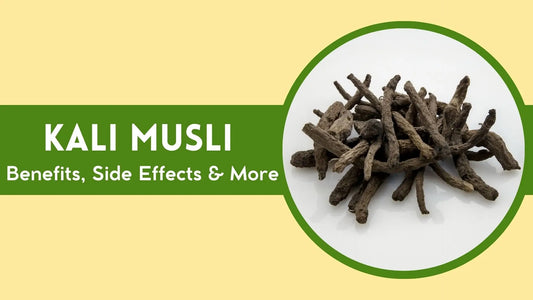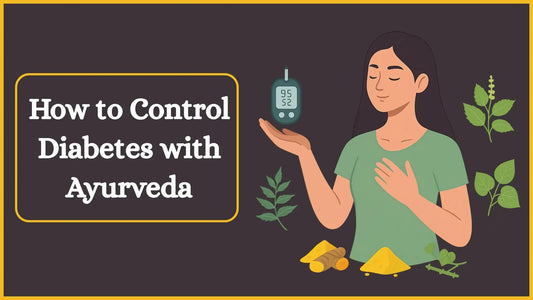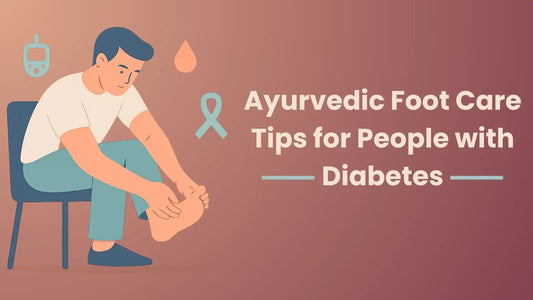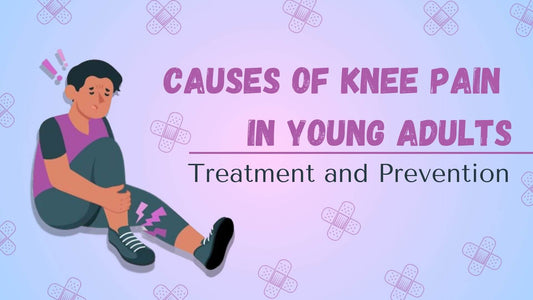
Causes of Knee Pain in Young Adults
Knee pain is the outcome of several basic causes and the conditions working on the knees. It does exist in the elderly people and also affects the younger generation for several reasons. It is a far wider concept contrasting with the knee problem by encompassing the root causes dampening the knee condition.
The underlying causes of knee pain may vary from one person to another. On the other hand, specialists try to identify the knee problem with the help of proper analysis or gathering evidence regarding the condition affecting it.
Let’s check with the underlying medical causes of knee pain in young adults and even in the elderly:
How common is knee pain in young adults?

Frequent cases of knee pain in young adults have been found with the demography survey of certain age groups and appropriate reasons
The evidence-based research concluded about the repeated issues of knee pain in the following ways:
- Information reported in the Journal of Adolescent Health highlights knee pain harming mobility and flexibility among 18% of adolescents with the age between 14 years and 20 years.
- It is also the evidence-based study given in the Journal of Arthritis Care and research reflects on the 7.8% of adults between the ages of 18 and 29.
- In reference to the Journal of BMC Musculoskeletal Disorders, nearly 19.3 % are suffering from joint pain belonging to the age group of 18 to 35.
It is required to be noted that the information about the number of younger people suffering from joint pain owing to varying reasons. Overuse injuries, tendonitis, meniscus tears, ligament sprains, sports-related injuries, patellofemoral syndrome, and other musculoskeletal problems are the varying abnormal knee conditions that would appear as a burden to the patient until such cases are properly treated.
What are the different types of knee pain?
Under the several types of joint discomfort, varying degrees of joint pain exist. In concern with the causes like overuse injuries, traumatic injuries and inflammatory conditions, let’s go ahead and understand the following types of knee pain.
Causes of knee pain in young adults

Overuse injuries
Constant wear and tear and strain in the same parts of the body with symptoms like chronic stress, emotional disability and running away from performing any duty and relationship troubles.
Patellofemoral syndrome
As one of the forms of overuse injuries, the pain is seen in the location of the kneecap or patella and its surrounding areas. People undergo such problems as a result of consistent use or strain of the affected area, imbalance in the muscles and disarrangement in the patella. Patellofemoral syndrome awaits immediate treatment and one must refrain from running till the pain disappears.
Osgood-Schlatter disease
It is a type of sports injury affecting the person in his or her adolescent period in his or her patellar tendon just below the knee. He might get this injury and later suffer from such knee pain disease as a result of running, jumping and kicking. Repetitive pressure on the tibia developing in teenage or puberty can be a matter of worry as it can further lead to critical conditions in later life.
Sinding-Larsen-Johansson syndrome
Quite similar to Osgood-Schlatter disease, Sinding-Larsen-Johansson syndrome hurts the body. It is also found in adolescents who are in sports activities and have suffered an injury in the patellar tendon connecting with the knee cap below.
Patellar tendinitis
This kind of medical condition is identified as the jumper’s knee in the patient. Patellar tendinitis happens in the tendon connecting the patella and shinbone as a result of repetitive strain and pressure on the tibia or shin bone running between the knee and ankle.
Iliotibial band syndrome
It is related to the inflammatory condition disrupting the outer area of the knee. As connective tissue runs from the hip to the knee, the Iliotibial band syndrome becomes stiff and irritable at the knee joint. Such a problem is mostly found in runners and different sports athletes who are involved in repetitive knee movement and extension.
Traumatic injuries
As one of the major causes of joint pain in young adults, it becomes difficult to move the affected area and perform any activity. The sharp and penetrating wound occurs in the affected area suffering from road crashes, crush injuries and assaults.
Ligament tears
In the form of fiber tissue, the ligament connects the bones, maintains the structure of bones together and boosts stability and strength. But stability and strength disappear the moment there is a rupture in the ligament. Ligament tears are a serious form of traumatic injury that may happen to a person in sports activities like skiing, basketball and football. It may suddenly be upon anyone as he or she tries to twist the knee or any part of the body.
Meniscus tears
Meniscus is a type of cartilage and it may get torn under the circumstances of any injury in sports or due to increasing age. A torn meniscus is quite difficult to repair. But the sooner the medical attention is given to the patient, the better will be the condition of the patient suffering meniscus tears.
Chondromalacia patella
It is a result of degeneration of the cartilage tissue lying underneath the kneecap. Such traumatic injury affects the majority of sportsmen including runners and therefore it is known as runner’s knee. One goes through severe pain and edema as this problem rises when the thigh bone hits the knee cap in a repeated manner. Contacting an orthopedic surgeon will help in recovering from the underlying condition of the chondromalacia patella.
Inflammatory conditions
In other words, it is inflammatory arthritis which is distinguished by pain, stiffness or hardness of the joints, swelling and aching sores.
Septic arthritis
It is the condition of joints getting infected with germs as a result of penetrative injury happening due to an animal bite or any kind of accident. Septic arthritis triggers the risks of spreading the infection all across the body. There is a need for immediate medication to control pain, swelling and redness.
Juvenile rheumatoid arthritis
Juvenile rheumatoid arthritis[1] targets anyone the age of 16 or below with growing inflammatory swelling and pain in the joints of the body. Growing inflammatory arthritis and stiffness may worsen the health condition of the child. The patient seems to lose flexibility and mobility as the problem grows over time and may suffer the loss of life.
Systemic lupus erythematosus
In another form of autoimmune disorder, it may bring up miserable conditions to the health through inheritance, abnormal hormonal conditions and an unhealthy environment. One can suffer from pain and swelling miserably in the joints or undergo problems in different organs of the body with varying symptoms of painful chest, inflammatory fever, redness and several discomforting health conditions.
Symptoms of knee pain in young adults

Pain
It happens to affect the knee at a much younger age as a result of nutritional deficiency of calcium and vitamin D followed by overuse of the affected area and cartilage loss.
Swelling
Increasing pressure and constant overuse of joints resulting in wear and tear of joints causes sores in the surrounding areas of joints.
Stiffness
Lack of synovial fluid in the joints owing to aging, nutritional deficiency and consistent overuse of the joints, one experiences stiffness in the joints and their connective tissues.
Redness
With growing tenderness and sores in the affected joints, redness also arises in the surrounding joints. It has been observed that patients affected with rheumatoid arthritis in joints also suffer from redness or inflammatory pain, itching followed by skin allergies.
Warmth
It is in the form of heated joints weakening the immune system and causing pain and discomfort.
Decreased range of motion
It is the inability to move the joint of any limb if affected with growing redness, inflammation, swelling and pain. Increasing intensity of pain, swelling and tightness in the muscles surrounding the joints bring limitations to the movement.
Instability
In other words, it is about difficulty balancing the knees due to impaired knee joints. Preventing cartilage loss can bring back stability in the joints.
Clicking or popping sounds
Wear and tear of cartilage leaves the joints unprotected and makes the person suffer from inflammatory pain, and stiffness and as a result experience clicking or popping sounds.
Diagnosis of Knee Pain in Young Adults

Medical science has come up with an all-inclusive pattern of examining cases of arthritis or knee pain. It involves comprehensive research on the case history of knee pain and analyzing the affected area leading to verifying the symptoms and causes and determining the type of knee pain with imaging tests.
Let’s get further into to following steps:
Medical history
Gathering information in concern with the problems and issues suffered by the patient owing to their knee health.
Physical examination
Healthcare professionals will determine the severity of the joint pain by helping find the symptoms and the related causes.
Imaging tests (X-rays, MRI, ultrasound)
With the help of any of the latest scanning types, one can check the condition of joints and get into a deeper analysis of the joint structures.
Treatment of knee pain in young adults

Treatment related to knee pain is based on investigating the root cause of the problem and coming up with varying self-care strategies and medication.
Rest
Relaxation of the affected knee along with the connecting body parts is essential to bring it to normal conditions. Keeping a pillow under the knee while lying down or sitting in stretched form will boost relaxation and reduce swelling and inflammation in joints.
Ice
Depending on the surrounding temperature or climatic conditions, you can either use ice packs or a hot water bag to soothe the pain and reduce the swelling and inflammatory conditions.
Compression
Wearing an elastic compression bandage on the pain-impacted area of the knee will reduce pain, swelling and inflammation. Further, you can also use the Ortho Veda oil by massaging to boost blood circulation in painful joints and reduce cartilage loss.
Elevation
It is the elevated posture where the patient places his feet raised on the pillows and just above the heart.
Over-the-counter pain relievers
It may be ibuprofen, Advil, Motrin and Aleve.Such painkillers help in relieving pain for some time. But instead of depending on modern medicines, it is always safe to rely on the ayurvedic oral pain-relieving elements, balms and oil. Such medication based on ayurvedic principles will heal the problem from the root and have long-lasting pain-relieving and revitalizing effects.
Physical therapy
It involves physical exercises and using hands-on therapies or massaging techniques and ultrasound for knee pain.
Bracing
Using braces made from metal, foam, plastic, or any elastic material for the affected knees’ dislocations, cartilage loss, tears and sprains will contribute to alleviating pain and improving flexibility and mobility.
Surgery
It is with the help of an expert orthopedic surgeon, that you can control ACL tears and reduce cartilage loss. After diagnosing the condition of knee pain, the doctor may apply non-invasive surgery to improve the connectivity between the thigh bone and the shinbone.
Prevention of knee pain in young adults
Warm up before exercise
As per the guidance of the certified yoga expert or gym trainer, you can engage in muscle strengthening exercises and light cardio exercises to get relief from swelling and nagging pain in the knees.
Cool down after exercise
As per your comfort level and discussing the severity of knee pain with the certified trainer, you can get engaged in light jogging or running, seated forward bend stretch and knee-to-chest pose.
Wear proper footwear
Don’t allow yourself to wear footwear with damaged soles. It will increase the risk of arthritis further. Rather, use flat and lightweight shock-absorbing shoes or slippers to gain stability in your feet and walk comfortably.
Maintain a healthy weight
Obesity, high levels of cholesterol and liver problems can put pressure on the knee and lead to wear and tear of cartilage. Adequate amounts of water drinking, lemon juice and consuming vitamin C along with wholegrains and green leafy vegetables will not increase the fats in the body.
Strengthen the muscles around the knee
Consulting with any physiotherapist, you can help yourself with quadriceps strengthening exercises. Instances are straight leg lifting and wall slides. You can repeat 10 to 15 times with one leg for 15 minutes to get pain-relieving results.
Avoid repetitive strain activities
Maintain appropriate gestures with your limbs while sitting, standing and performing any action or work. Align your knees with other parts of your body in such a way that it does not get twisted and hurt you further. During the performing hours at the workstation, make arrangements for a foot resting place while sitting in the chair. Keeping yourself in a comfortable position must be your priority to avoid knee pain in the future.
Conclusion
Knee pain is no longer a problem only with elderly people, it is found in youngsters quite early during their school and college days. Determining the intensity of the knee pain or the causes of knee pain in adults becomes necessary to avoid further complications.
But then some types of knee pain may go away with short-term medication and massage with oil and ointment. However, there may be a requirement for invasive surgery to reduce cartilage and boost flexibility. Additionally, involving oneself in physical exercises both warm-up and cooling-down techniques and maintaining appropriate postures can boost blood circulation and reduce knee pain symptoms naturally.
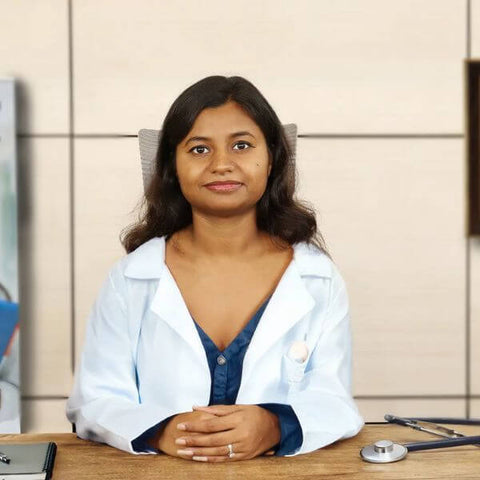
Dr. Pooja Verma
Dr. Pooja Verma is a sincere General Ayurvedic Physician who holds a BAMS degree with an interest in healing people holistically. She makes tailor-made treatment plans for a patient based on the blend of Ayurveda and modern science. She specializes in the treatment of diabetes, joint pains, arthritis, piles, and age-related mobility issues.

